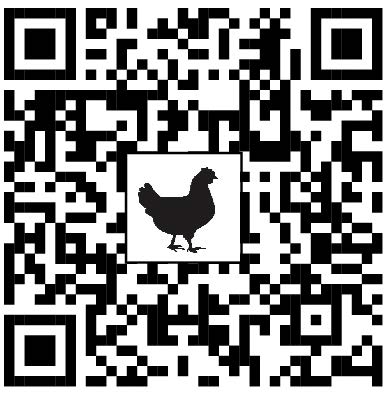Predators for Free-Ranging Poultry
ID
APSC-192P
EXPERT REVIEWED
Introduction
Predation is a common risk for poultry that are allowed to roam freely outdoors (fig. 1). Predator types may differ depending on the region. Therefore, this article may not cover all possible predators for a specific geographical region. This article provides an overview of potential flock predators, how to identify the predator, and approaches to avoid predation in your free-range poultry flock.

Predator Risks Depend on the Time of Day
Predator risk depends on the time of day, as predators can be nocturnal (active during the night), diurnal (active during the day), crepuscular (active mostly during twilight), or cathemeral (active during hours of daylight and darkness). The majority of mammalian predators are nocturnal. Yet owned and feral cats and dogs may prey on birds or eggs in the flock any time of day. Most predation will occur at night, in part because of the lack of people keeping the predator at bay at that time.
Examples of diurnal predators are
Cats (when birds are small)
Dogs
Birds of prey
- Snakes (eggs or when birds are small) (fig. 2)
Examples of nocturnal predators are
Rats
Racoons (fig. 3)
Skunks (fig. 4)
Opossums
Foxes
Owls
Weasels and minks
Bobcats
Coyotes (fig. 5)
Bears




Determining the Predator Based on Evidence at the ‘Crime Scene’
If predation occurs in the flock, it is sometimes possible to determine which predator attacked the flock.
Predators can leave behind tell-tale signs that will be helpful in preventing future attacks (table 1). A wildlife camera could be just the tool to identify potential predators near your flock. These can be set to take a picture or record a video when motion is detected.
Evidence |
Likely predator(s) |
|---|---|
| Missing adult birds |
Bird of prey, bobcat, coyote, dog, fox |
| Missing birds, but lots of feathers are left behind |
Coyote, fox, hawk |
| Missing eggs or chicks |
Bird of prey, cat, coyote, fox, opossum, rat, skunk, snake |
| Missing heads |
Bird of prey, raccoon |
| Missing limbs |
Racoon |
| Lacerations near the cloaca |
Opossum, other chicken, (cloacal pecking), weasel (or relatives) |
| Dead injured birds |
Dog, weasel (or relatives) |
| Dead intact birds |
No predation, but possible disease or due to piling |
Prevention of Predation
There are some options to prevent predation. Knowing what predator is roaming around your flock will help with choosing the best method of prevention. A digging predator will require a different approach than a flying predator. Improving flock housing and surrounding fences will be key to prevent predation. A forest-like area for the chickens will reduce chances of birds of prey attacking the flock, as these predators prefer open fields. Here are some tips to prevent predation:
Keep birds inside during certain times of the day.
Keep birds constrained to a specific area using a fence or enclosed run with overhead cover.
Bury the wire (1-2 feet) to prevent digging.
Include a skirt on the outside to prevent successful digging.
Low voltage electric fencing will deter predators to enter the run.
Provide overhead cover for poultry on the range:
Natural shelter like trees, shrubs, and other vegetation to hide in/under
Artificial shelters to avoid and hide from predators
Owl and/or coyote decoys may work but not for the long-term.
Remove debris for predators to hide or nest in near the coop.
Lock up or remove attractants such as feed, waste, and eggs.
Use a guard animal such as an alpaca, a guard dog, a donkey or even geese (fig. 6).

Summary
Poultry flocks that are allowed to range outside are at risk of being preyed upon by domestic and wild animals. Preventative measures can be taken to limit this risk. If predation does occur, there are clues to find out which predator has attacked to prevent future attacks.
Additional Resources
Jacob, J. 2023. “Predator Management for Small and Backyard Poultry Flocks.” National Cooperative Extension. https://poultry.extension.org/articles/poultry-man-agement/predator-management-for-small-and-back- yard-poultry-flocks/.
Jacob, J. 2020. “Predator Management for Small and Backyard Flocks.” https://connect.extension.org/event/managing-predators-with-a-small-or-backyard-poultry- flock.
Jacobs, L., and M. E. Persia, 2021. “Maintaining the Health of Your Backyard Flock.” Virginia Cooperative Extension. https://www.youtube.com/watch?v=PMEl-WUIC8hw.
McDermott, T., and M. Titchenell, 2018. “Predators of Poultry.” https://ohioline.osu.edu/factsheet/vme-22.
Moyle, J., M. Perdue, T. Tabler, J. Rhodes, and P. Goeringer. 2020. “Identifying and Preventing Poultry Predators in the Mid-Atlantic Region.” University of Maryland Extension. https://extension.umd.edu/sites/extension.umd.edu/files/publications/Poultry%20and%20Predators.pdf.
Poultry Extension Collaborative. 2021. “Free-Range Poultry Predators,” Poultry Press. https://www.canva.com/design/DAEuCFXlkdI/ZMoZ9U0OsLOxFs-1rt-KR7g/view.
Scan to access more publications about poultry.
Virginia Cooperative Extension materials are available for public use, reprint, or citation without further permission, provided the use includes credit to the author and to Virginia Cooperative Extension, Virginia Tech, and Virginia State University.
Virginia Cooperative Extension is a partnership of Virginia Tech, Virginia State University, the U.S. Department of Agriculture (USDA), and local governments, and is an equal opportunity employer. For the full non-discrimination statement, please visit ext.vt.edu/accessibility.
Publication Date
September 28, 2023




